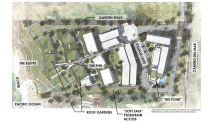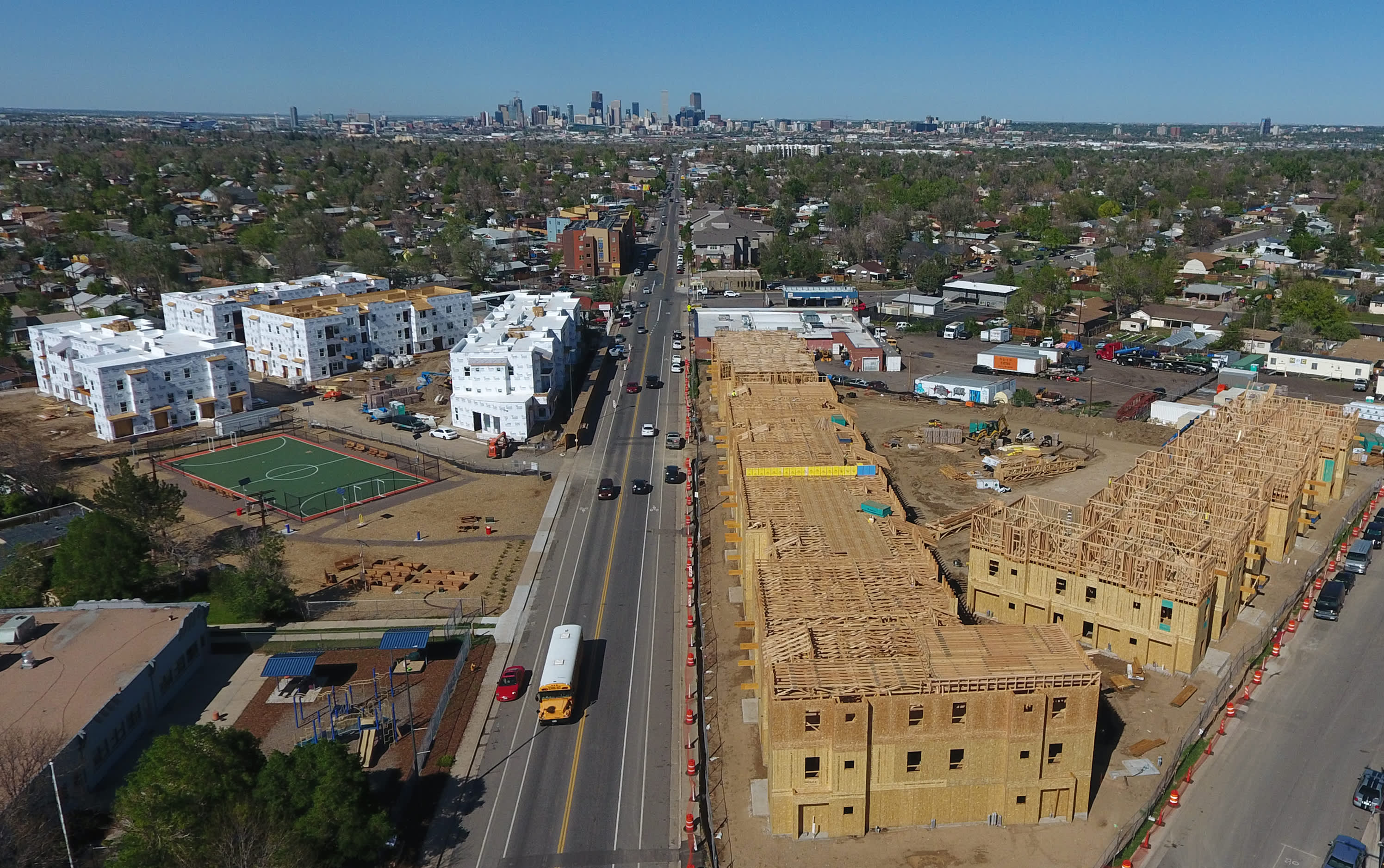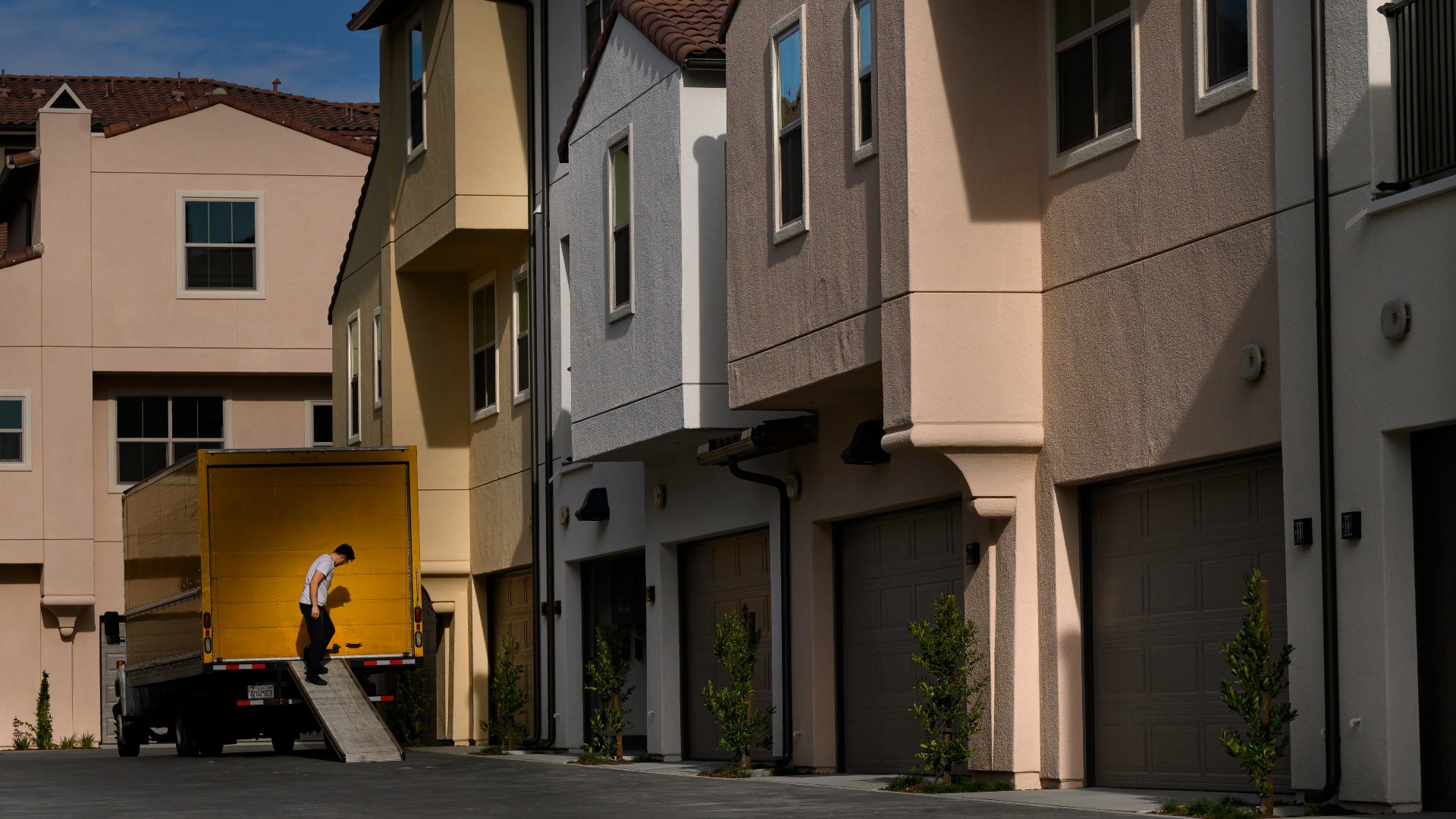What to Know
- California has required localities to file development plans to allow for new housing projects for low- and moderate-income families
- Eight cities in San Diego County filed plans that are out of compliance with state laws
- Housing developers can get state approval on their projects when cities are out of compliance
If you’ve looked for a new place to rent or buy at any point in the past three years, you already know: San Diego County is in the midst of a housing crisis. City and county leaders have long promised new housing. Several lawmakers campaigned on streamlining the infamously long and expensive housing project approval process for developers. But not everyone is in agreement exactly where new housing should be built.
Developers typically need to get approval from local city councils and planning commissions before moving forward on projects. Those groups can stop proposals in their tracks if the development area isn’t zoned for residential properties or if the area doesn’t allow for denser housing units like apartments.
But right now, housing developers are using state laws to try to bypass localities to get their projects approved.
Get San Diego local news, weather forecasts, sports and lifestyle stories to your inbox. Sign up for NBC San Diego newsletters.
Since 1969, California’s Housing Element Law has required cities to update their housing plans every eight years. That includes rezoning existing land to make space for new housing development, including units that low- and moderate-income families can afford.
When localities don’t have a state-approved plan, they cannot deny new housing projects based on zoning.
NBC 7 Investigates spoke with Nathan Moeder, a real estate development consultant who also teaches urban studies and planning at UC San Diego.
“The situation with the housing shortage — it’s become more of a pressure cooker, and there’s more pressure on the state and cities to build housing,” Moeder said. “The state is basically laying down the hammer. If you’re out of compliance, the state will just approve it.”
The state is basically laying down the hammer.
Nathan Moeder, real-estate-development consultant
Right now, according to the state, there are eight cities in San Diego County that are out of compliance with the Housing Element Law. The cities of Del Mar, Coronado, Escondido, La Mesa, Lemon Grove, Oceanside, Poway and Solana Beach all submitted housing plans to the state. However, the state says those plans don’t meet guidelines for future housing. Most of those cities told NBC 7 they are working with the state to get in compliance, but until they do, they can’t block new housing projects based on city zoning laws alone.
“They’re trying every rule and every incentive to get developers to build or make it easier for anybody to build because we’ve basically run out of land that we’re allowed to develop,” Moeder said.
In Del Mar, one developer says it's close to seeking state approval for a project called Seaside Ridge that would install more than 250 apartments on 6.9 acres of the bluffs near Del Mar Dog Beach. Eighty-five of those units would be set aside for extremely low to moderate-income families, with annual salaries ranging from $38,000 to $128,000 for a family of four.

Kevin Sabellico is a big supporter of developing affordable housing units in one of the most expensive places to live in the nation.
“We want housing,” Sabellico said. “We want it everywhere. A lot of people want housing but just not near them. We want it near us.”
Sabellico is with the group YIMBY Democrats. Yimby stands for “Yes in My Backyard.” The group pushes for affordable housing in places near where people work and near public transportation. Sabellico grew up in Carlsbad and said the current housing market makes it nearly impossible for him to live there.
“I want to be able to afford a home here someday, and we have to build enough housing for people like me to do that,” Sabellico said.
But not everyone would like to see developments like Seaside Ridge spring up in our coastal communities. That includes Peter Stern, a retired attorney who’s fought against several recent developments, including an Encinitas ballot measure that would have added taller, denser housing.
“I don't believe that any developers should be able to circumvent local municipalities' zoning laws zoning rules,” Stern said. “To think that you can redevelop the coastal communities and turn them into urban centers, I think, is quite misplaced.”
Stern said it should be up to people in those communities to decide what’s best for their communities, not state officials in Sacramento.
“Zoning laws and zoning rules are put in place to reflect the interests of the community and to maintain a particular community character and to not degrade a community or neighborhood, once people have lived there with a particular expectation,” Stern said. “I'm concerned with parking congestion. Shops for people, not just tourists. I want to see a rich community that has a diversity of people, a diversity of colors, a diversity of attitudes that gives richness.”
But Sabellico supports state intervention.
“Change is good,” Sabellico said. “People are oftentimes afraid of change. Then when they see that change, they’re happy that it happened. Sometime, somewhere, all of us moved to where we live now. We can’t just shut the door behind us and say, 'No more!' ”
Californians are seeing similar battles unfold across the state. Developers in Santa Monica recently won a similar case to bypass the local review process there. And just last week, California’s Attorney General threatened the city of Huntington Beach, which passed local laws to block housing projects under state laws. Attorney General Rob Bonta calls those actions unlawful.
The city of Del Mar says it’s been working with the state to modify its housing element plan so it can be compliant. The developers of Seaside Ridge sent NBC 7 this statement about their efforts to get the project approved:
Statement From the Developer of Seaside Ridge
Unfortunately, the city of Del Mar remains out of compliance with California's Housing Element Law. Time is not on Del Mar’s side, and it’s clear now more than ever that the city must take critical steps immediately in order to achieve compliance.
According to its Jan.13 letter to the city of Del Mar, the California Department of Housing and Community Development is requiring Del Mar to comply with AB 1398, which requires cities without a compliant housing element to rezone identified housing sites before they can be deemed in compliance. The city of Del Mar has not completed all of its required rezoning.
Seaside Ridge would go a long way toward helping the city of Del Mar comply with California's Housing Element Law by providing housing opportunities for a range of income groups. Our proposal would fulfill nearly 80% of the city’s immediate need for 54 lower-income units in the 6th housing cycle and well over 100% of the city’s moderate-income need.
We hope that the city will see Seaside Ridge as the opportunity it is and continue advancing this worthy project without delay. Seaside Ridge is a real project, a real solution that moves the city toward – and not away from – compliance with state law.
While we support the city’s effort to create housing at the Del Mar Fairgrounds, the city’s timeframe extends far beyond what the state’s 6th cycle laws allow, and it also does not appear that housing is a priority of the fairgrounds leadership as it embarks on a long-term master planning process to increase revenues from entertainment and fair-related activities. More so, the city’s housing deficit cannot be accommodated on the fairgrounds alone, should any housing ultimately be allowed there.
Seaside Ridge provides significant housing benefits to Del Mar: It delivers real opportunities for new families of varying income ranges to call Del Mar home, it helps the city obtain a legally required certified housing element, it secures important grant funding for housing program implementation, and it provides the time needed to continue exploring the idea of placing housing on the fairgrounds property.
Statement From the City of Del Mar
The Del Mar City Council adopted the city’s 6th Cycle Housing Element on March 25, 2021 (prior to the April 2021 statutory deadline), which was submitted to the State Department of Housing and Community Development (HCD) shortly thereafter. Since then, the city has continued to work diligently with HCD to modify the document as needed to achieve certification. Based on recent feedback from HCD, we are not far off from achieving that goal.
With regard to the proposed Seaside Ridge development in North Bluff area of Del Mar, the city’s response to their predevelopment application and other publicly available documents can be found on the city’s website at: Seaside Ridge Preliminary Development Application (PDA22-001) | Del Mar, CA - Official Website. Other than the city’s response to the developer’s predevelopment application, the city has no further comment on the proposed development at this time.
NBC 7 Investigates also reached out to seven other cities that are currently out of compliance with the California Housing Element law. You can read their statements below.
Coronado
The city is actively working on revising its draft Housing Element Update to accommodate the City’s 912-unit Regional Housing Needs Allocation. Most recently, city staff has been focused on bolstering its technical team and bringing on consultants to determine how Coronado may overcome its many unique geographic and regulatory constraints necessary to complete a compliant Housing Element Update. City staff has also actively engaged with HCD to receive technical assistance and collaborate on a realistic time frame and process for finalizing further updates to the city’s Housing Element.
Escondido
The city of Escondido, like many other jurisdictions across the state of California and in San Diego County, does not currently have a compliant housing element. This, however, is not for a lack of effort or intent to comply with state housing element law but more so the ongoing challenge of meeting new housing-element legislation enacted over the past several years that is new to the 6th cycle. The city is currently scheduled to present its Housing Element to the planning commission on Feb. 28 and the city council on March 22.
The underlying purpose of any housing element is to conduct a systematic assessment of housing needs and those constraints that influence the production of housing, culminating in a detailed housing strategy with specific goals, policies and programs on how the jurisdiction plans to meet present and future housing needs. For the 6th cycle period, the San Diego Association of Governments (SANDAG) adopted Regional Housing Needs Assessment (RHNA) assigned the city of Escondido 9,607 new units for the period of April 15, 2021, to April, 15, 2029, the third highest allocation in the SANDAG region. The city of Escondido’s Housing Element must be responsive to this goal through its planning policies and land use regulations.
The city of Escondido initiated its Housing Element update in 2020 right as the state of California was declaring a state of emergency for the COVID-19 pandemic. Despite this, the city launched a comprehensive public participation program, including both for the Housing Element and two concurrent and related plans and studies — the East Valley Specific Plan and an economic study evaluating the feasibility of different residential product types and densities in the city. The East Valley Specific Plan is a vital part of the Housing Element in the sense that it plans for and anticipates development and redevelopment in the vicinity of the former downtown hospital campus, an area that is expected to accommodate roughly 6,000 new units that were not previously allocated in the city’s general plan.
The initial drafts of the Housing Element and the East Valley Specific Plan were released for public review in March 2021. The city received comments from the Department of Housing and Community Development (HCD) in May 2021 and proceeded to present the Housing Element to the planning commission and city council for approval in July and August 2021. The day before the city council approval, the city received further comments from HCD outlining outstanding items the city must address to achieve certification.
The city worked through the required public review and HCD review processes between May and October 2022 before it received a review letter from HCD dated Dec. 8, 2022, stating: “[t]he draft revisions to the element meet the statutory requirements described in HCD's Aug. 2, 2022, review.” The city's Housing Element, though, may not be found in full compliance until the city has adopted the East Valley Specific Plan as a result of AB 1398, which was passed in late 2021 and went into effect on Jan. 1, 2022, requires jurisdictions complete their rezoning efforts in order to obtain compliance from HCD. Since the city’s Housing Element was not certified at the time AB 1398 went into effect, the city must comply with the rezoning requirements before HCD can certify the city’s Housing Element.
The Housing Element incorporating all of the changes required by HCD is scheduled for presentation to the planning commission on Feb. 28 and will be presented to city council for adoption on March 22; the East Valley Specific Plan will be presented at future meetings. It should also be noted that the city continues to process and approve applications for housing projects while the Housing Element is being finalized, with the goal of providing housing that meets the needs of all members of our community.
La Mesa
The city of La Mesa did not return NBC 7's repeated requests for a statement.
Lemon Grove
The city of Lemon Grove did not return NBC 7's repeated requests for a statement.
Oceanside
The city of Oceanside’s 2021-29 Housing Element was adopted by the city council on June 16, 2021, within 120 days of the April 15, 2021, statutory deadline for adopting a Housing Element. Since adoption in 2021, the city has continued to work with the Department of Housing and Community Development (HCD) to address remaining Housing Element compliance items necessary to receive a determination of compliance (“certification”) from HCD. A revised Housing Element was re-submitted to HCD for their third compliance review on Dec. 6, 2022. HCD provided a compliance letter on Feb. 3, 2023, indicating that the Housing Element needs additional revisions to meet statutory requirements of state housing law. Staff anticipates that all outstanding comments will addressed in the coming months.
An additional matter affecting HCD certification is the rezoning of the sites to address RHNA shortfall. As documented in the Housing Element, the city doesn’t have enough housing capacity under the current general plan and must account for the “shortfall” of 1,086 units, including 960 lower-income units, by re-designating/rezoning candidate sites identified in the housing sites inventory. The city intends to address this shortfall by amending the zoning ordinance to increase the density allowance to a minimum of 35 dwelling units an acre for mixed-use projects on commercial zoned sites within the boundaries of the city’s draft Smart and Sustainable Corridors Specific Plan. The zoning text amendments are scheduled to be considered by city council on March 8, 2023.
Poway
The City of Poway Housing Element Update (June 30, 2020, to April 15, 2029) was adopted by the Poway City Council 18 months ago (Aug. 3, 2021) and sent to the state of California Department of Housing and Community Development (HCD) for certification. We have been in regular communication with the HCD since submitting the draft and actively addressing comments made during the review process. Our position is we are in full compliance with state law and have done everything required to timely adopt an updated Housing Element.
Solana Beach
The city of Solana Beach has been working very closely and collaboratively with HCD since our city council’s approval and submittal to HCD of our 6th Cycle Housing Element. The following is an overview of that effort:
The city council adopted Solana Beach’s Housing Element on April 14, 2021, which the city found substantially complies with the Housing Element Law’s requirements.
- Despite the city’s findings, HCD has not yet certified the city’s Housing Element. The city has committed to working with HCD to obtain the agency’s approval.
- After several months of collaborative work with HCD staff, the city submitted an updated version of its Housing Element to HCD on Dec. 7, 2022.
- On Jan. 23, 2023, HCD staff provided additional feedback identifying additional analysis and programs it would like to see the city include.
- Over the past month, city staff have met with HCD representatives on a weekly basis to review the city’s working draft Housing Element as the city makes changes in response to HCD’s latest feedback.
- HCD and the city have agreed to finalize the draft Housing Element for re-submittal to HCD by March 1, 2023. Following the conclusion of HCD’s formal review period, the city will then take actions to finalize and adopt its updated Housing Element.




